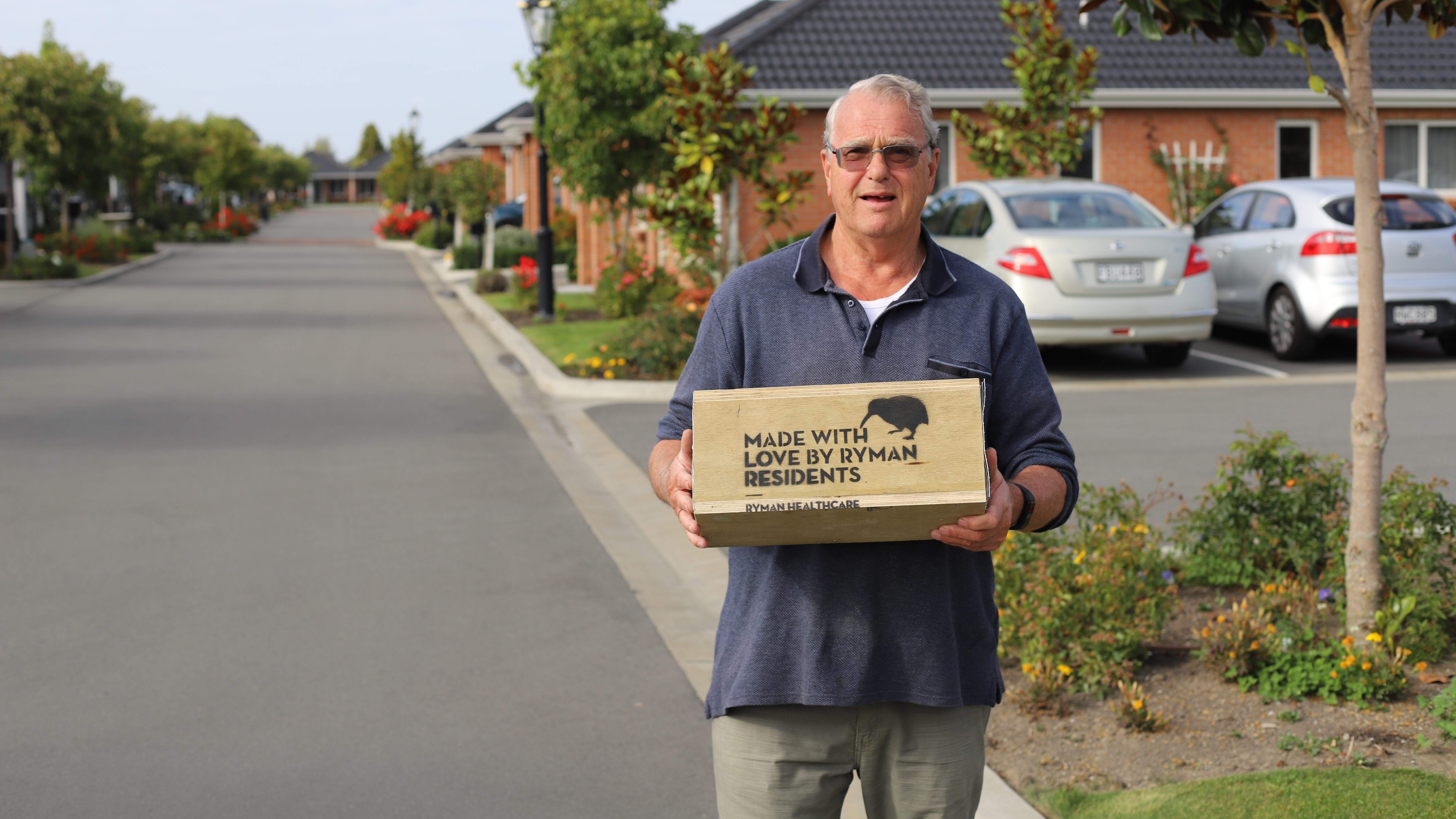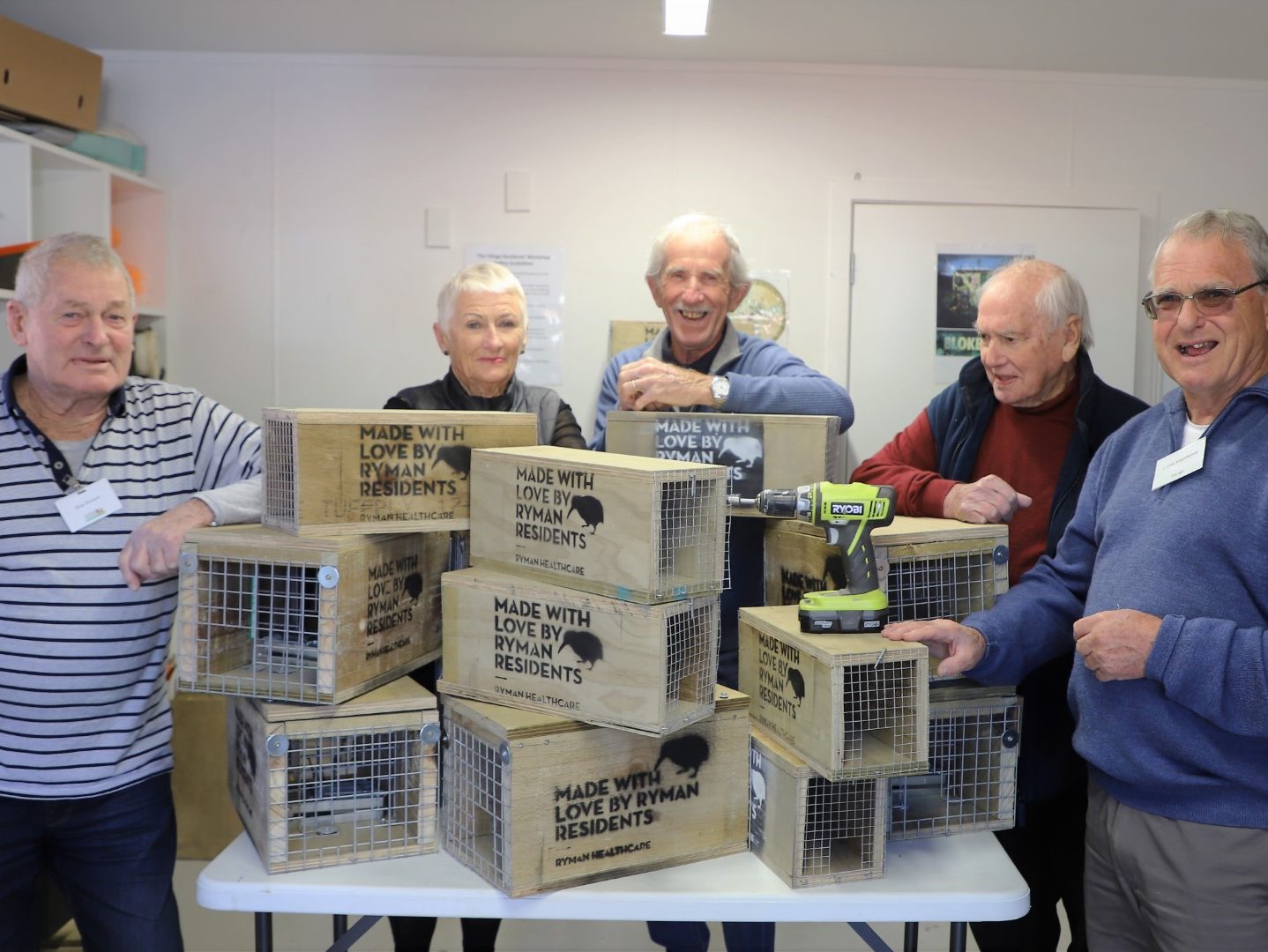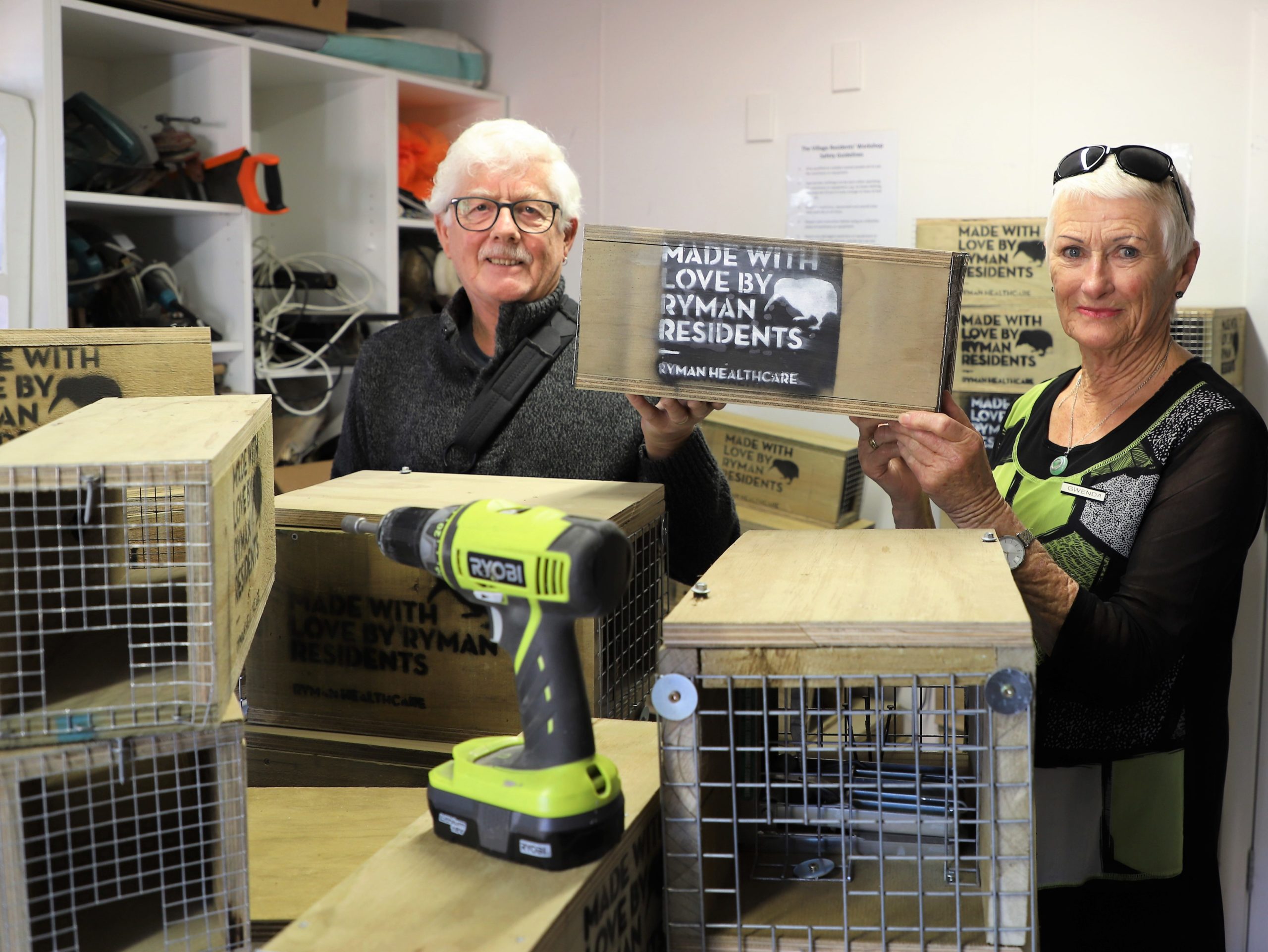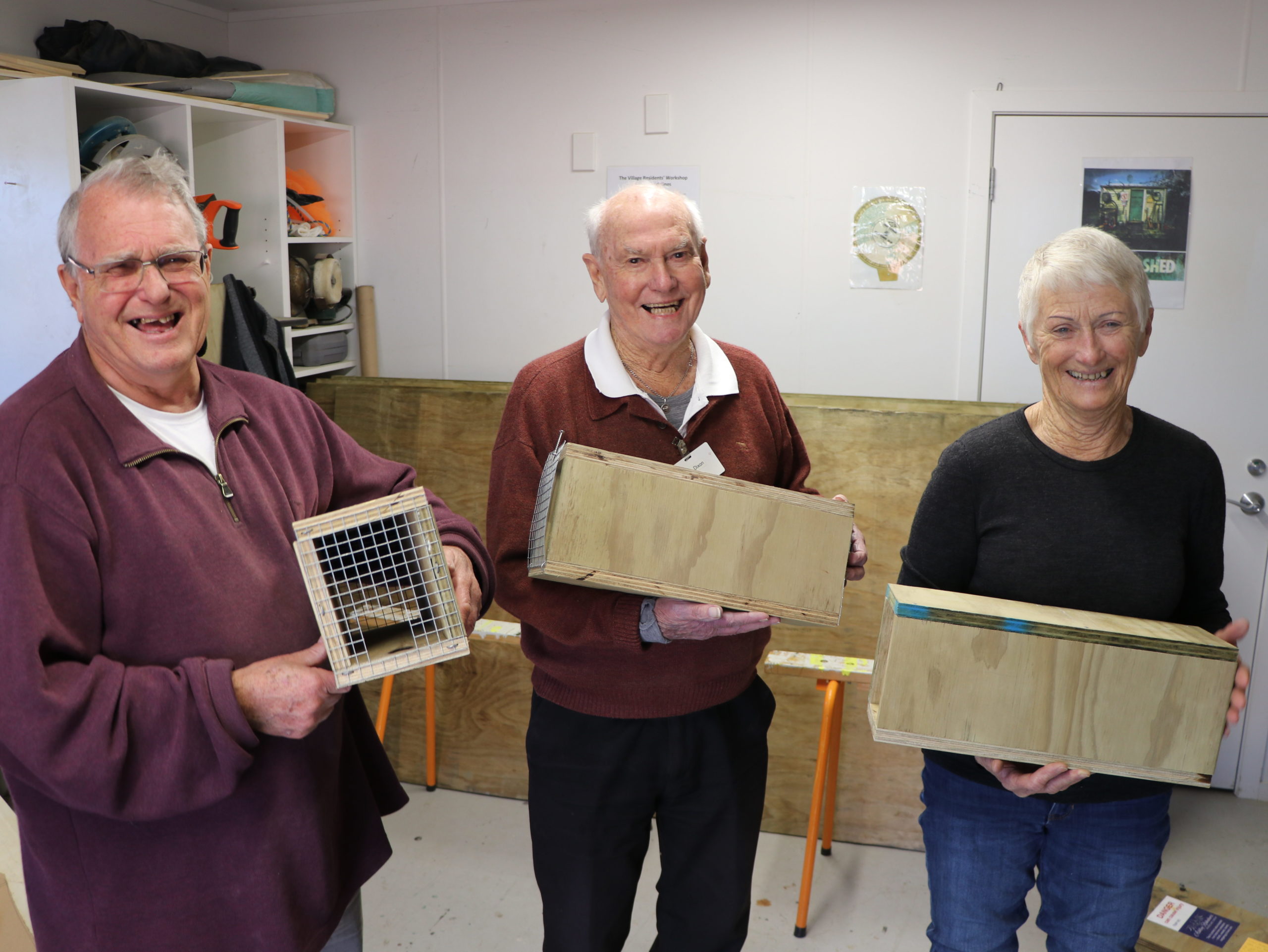Do you think retirement means putting your feet up with a good book and a cup of tea? Think again. Lynn Andrews, a 75-year-old retiree, has decided to do things differently. He’s combined two of his passions – woodworking and conservation – and started a trap-making hub at the Ryman retirement village he also calls home.

Over the last couple of years, Lynn and a dedicated group of residents from the Charles Upham Retirement Village have made hundreds of rat and stoat traps for local conservation groups.
And their mahi is contagious. With the support of Ryman Healthcare and the Department of Conservation (DOC), they are inspiring other retirement villages to get involved in the Predator Free 2050 movement.
Time for change

Lynn has always been passionate about conservation. He was involved in the Ashley Rakahuri Rivercare Group for more than a decade with his wife. “We both had a trapping line that we maintained on the river,” he says.
The braided Rakahuri (Ashley River) is home to some of the world’s rarest birds, with critically endangered tarāpuka (black-billed gull), ngutu pare (wrybill), and tarapiroe (black-fronted tern) all nesting on the bare shingle of the riverbank.
It’s ironic that Lynn, a watchmaker by trade, now has more time on his hands to dedicate to his hobbies. He loves woodworking, so when he noticed the Resident’s Shed wasn’t getting much use in the village, he decided to do something about it.
“We got talking over a couple of get-togethers, and someone suggested we should build traps,” he says. “The more I thought about it, the more it seemed like a good idea.”
The staff at Charles Upham have been supportive from the get-go. Ryman is keen to support projects that help protect the local environment, so the trap building hub was perfect.
It takes a village
Traps (like DOC 150s, 200s or 250s) are built to precise specifications, developed over years of trial and error. Lynn knew they’d need to build the traps right, so a friend who works for DOC in Rangiora helped him get hold of the plans.
Lynn’s years of fixing watches and carefully putting things back together mean he has an excellent eye for detail. Traps need to be built well and installed carefully to survive out in the bush and on the riverbanks in all weather.
DOC supplies the trapping mechanisms to go in the boxes, and Ryman supplies most of the materials – the wood, screws, and workshop space to put them together.
When the boxes are finished, they are sprayed with the words “Made with love by Ryman residents.”
The group loves doing this mahi. As well as boosting birdlife and helping make Aotearoa predator free, the work is immensely satisfying for the residents. Trap-making puts their diverse skills and talents to use – many worked as carpenters and tradespeople before retiring.
It’s a win-win for Ryman, residents and conservation.
Action stations

Alan Wood, who works at Ryman Healthcare, says, “The group has been super hard-working.”
Their donated traps have had a huge impact.
“Lynn and Charles Upham residents have built hundreds of traps for groups based around the Rakahuri (Ashley River), Port Hills, Nina Valley and Torlesse beech forest, as well as Medbury Scientific Reserve near the Hurunui hotel – the first project by Ryman,” Alan says.
They recently completed a set of 44 traps for the Nina Valley, near Lewis Pass. They worked with DOC to modify them so cheeky kea or weka can’t tamper or enter the traps. For the Nina project, they had help from Kaiapoi ITM with donations of timber, and the Macpac team who helped fund the trapping mechanisms.
The Predator Free New Zealand Trust (PFNZ) helped Lynn connect to community groups funded through their Backyard Trapping Programme.
About 50 rat tunnels and six DOC 200 traps have gone to Predator Free Sumner. The Sumner group has used them to bolster the areas they were already trapping and extend their lines to cover more ground.
Gabe Ross from Predator Free Sumner says, “the traps have helped our residents and volunteers catch rats, hedgehogs and the occasional mouse.”
“Our catch tally in the Ryman supplied trap boxes is currently about 60 rats, 12 mice and 13 hedgehogs,” he says.
Gabe thinks the Ryman initiative is inspiring. “It’s a great way to utilise the practical skills of the Ryman residents and an excellent example of positive community outreach by local businesses,” he says.
Out in the bush and along the riverbanks, the birds, lizards and invertebrates are all benefiting from the Ryman traps. Lynn points out that vulnerable native plants also thrive when rodent numbers drop.
Lynn says the group is “really proud of what they’re doing and that they’re contributing to conservation.”
More hubs on the horizon
Julia Wallace, a Ryman Healthcare village in Palmerston North, started making traps after getting inspired by the Charles Upham team.

Alan Pretorius from Julia Wallace met with Lynn to learn the ropes. Since then, Alan and a team of eight residents have built more than 200 traps. They donated them to DOC, who plans to reintroduce kiwi to the Pohangina River valley, northeast of Palmerston North, by 2025.
Anthony Wilding Retirement Village and Diana Isaac Retirement Village, both in Ōtautahi Christchurch, are now also involved in trap making.
Lynn’s keen to grow the project. “There’s a huge need out there,” he says. “The future must be to eradicate the animals out there causing all the problems for our birds. We all need to get together to help put a stop to it.”
He knows they’re part of a bigger movement and is excited to get even more groups and people involved.
Want to boost birdlife and business at the same time?
There are lots of great ways businesses can get involved in the PF2050 movement.
Showing your support doesn’t always mean volunteering or donating a trap – check out our business success stories for inspiration.
You can start by trapping in your own backyard or joining a local trapping or conservation group.
Like Lynn says, “Conservation can’t be done with just one person or one group. It needs all of us together.”

